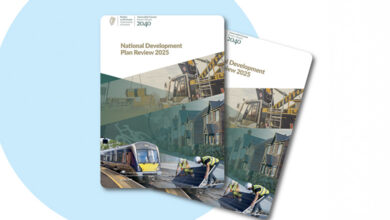What the recast Urban Waste Water Treatment Directive means for Ireland

eolas Magazine analyses the implications of the recast Urban Waste Water Treatment Directive, which entered force at an EU level in January 2025.
The recast Urban Waste Water Directive, formally called Directive (EU) 2024/3019, adopted in November 2024 and entering into force on 1 January 2025, replaces the 1991 Urban Waste Water Treatment Directive (91/271/EEC). The revision aims to modernise the European Union’s approach to urban wastewater management, introducing new obligations for member states in relation to pollution control, climate resilience, energy neutrality, and the treatment of micropollutants. The directive introduces a number of structural and regulatory changes that will be of particular relevance to Ireland, given the challenges that persist in areas such as infrastructure investment, treatment standards, and compliance monitoring.
The 1991 Directive, which formed the basis for urban wastewater policy across Europe for over 30 years, focused primarily on the collection and treatment of municipal wastewater and industrial discharges from agglomerations exceeding certain population thresholds. While it succeeded in driving improvements in wastewater infrastructure across the EU, including in Ireland, the directive had become outdated. It did not adequately address pollutants of emerging concern, nor did it reflect the wider environmental and climate-related priorities introduced through subsequent EU environmental and public health legislation. The recast directive aims to address these shortcomings while aligning the wastewater sector with broader objectives under the European Green Deal, the Zero Pollution Action Plan, and the Circular Economy Action Plan.
A key new requirement in the revised directive is the introduction of quaternary treatment for micropollutants. Member states will be required to ensure that treatment plants remove a significant proportion of pharmaceuticals and other chemical substances that may be present in urban wastewater. Specifically, agglomerations with a population equivalent (PE) greater than 150,000 must equip treatment facilities with additional treatment stages designed to remove at least 80 per cent of targeted micropollutants by 2045. Intermediate compliance targets require that 20 per cent of such plants be upgraded by 2033 and 60 per cent by 2039. Treatment plants serving populations between 10,000 and 150,000 PE will also be subject to this requirement where they discharge into sensitive water bodies, including bathing waters, drinking water sources, and protected habitats.
In the Irish context, this will apply directly to major urban centres such as Dublin, Cork, Limerick, and Galway, and potentially to a number of regional towns with discharges into environmentally sensitive areas. The implications for capital planning are significant, as the scale and complexity of quaternary treatment systems are expected to require large-scale infrastructure upgrades. The Environmental Protection Agency (EPA) has previously identified consistent underperformance at a number of Irish treatment facilities, and the implementation of this aspect of the directive will likely require accelerated investment and strategic oversight by Uisce Éireann in coordination with the Department of Housing, Local Government and Heritage.
Another major policy development in the revised directive is the establishment of an Extended Producer Responsibility (EPR) scheme. Under this provision, the pharmaceutical and cosmetics sectors will be held financially responsible for contributing to the costs associated with the removal of micropollutants from urban wastewater. From 31 December 2028, manufacturers placing products on the EU market that contain substances listed in the directive must provide financial contributions to cover a substantial share of the cost of quaternary treatment, as well as monitoring, reporting, and administrative functions related to the EPR system. Member states are required to establish transparent governance mechanisms to administer these schemes, and to ensure that financial contributions are proportionate and equitable.
The EPR provision introduces a new funding model for wastewater treatment that shifts a share of the financial burden from water consumers and public authorities to producers. In Ireland, the implementation of the EPR system will require legislative and administrative preparation, including engagement with affected industries and the designation of competent authorities for oversight and enforcement. It may also create opportunities for environmental innovation and reformulation in the pharmaceutical and cosmetics sectors, in line with green chemistry objectives.
The directive also introduces binding targets for energy neutrality in the wastewater sector. Member states must ensure that, by 2045, energy consumption in urban wastewater collection and treatment processes is balanced by renewable energy production and energy recovery measures. Treatment facilities with a capacity greater than 10,000 PE will be required to conduct regular energy audits and report energy consumption and greenhouse gas emissions. Interim targets in 2033 and 2039 are intended to support phased progress toward full energy neutrality. This requirement aligns wastewater policy with EU climate objectives, but also introduces operational challenges, particularly for older treatment plants that lack modern energy recovery systems.
In Ireland, achieving energy neutrality will likely require a combination of technological upgrades, increased investment in on-site renewable generation (such as solar photovoltaics and biogas), and changes in operational management. Uisce Éireann will be responsible for coordinating the implementation of these requirements.
Further requirements relate to climate adaptation and integrated planning. The directive mandates that member states conduct vulnerability assessments of wastewater infrastructure in light of climate risks, including flooding, extreme rainfall, and sea-level rise. For agglomerations of 1,000 PE or more, integrated urban wastewater management plans (UWMPs) must be prepared, taking into account urban drainage, runoff management, and the use of nature-based solutions. These plans must be regularly updated and coordinated with other water-related planning instruments, including river basin management plans under the Water Framework Directive.
The directive also strengthens rules on monitoring, public access to information, and data reporting. Operators will be required to make treatment performance, energy consumption, emissions, and compliance data available to the public, including through digital platforms. Rules on biomedia containment, sludge reuse, and treated wastewater reuse are also updated, reflecting a more circular approach to wastewater management.
Ireland, like all member states, must transpose Directive 2024/3019 into national law by 31 July 2027. The Department of Housing, Local Government and Heritage, in collaboration with the EPA and Uisce Éireann, will be responsible for overseeing this process. Legislative changes, administrative systems, and investment planning will need to be aligned in a relatively short timeframe to ensure compliance with the new obligations.
Broadly, the directive introduces a number of complex requirements across infrastructure, finance, governance, and environmental monitoring. While the long-term benefits are expected to include improved water quality, reduced pollution, and more resilient wastewater systems, the short- and medium-term challenges are substantial and will require coordinated and sustained policy action.
|
Recast Urban Waste Water Treatment Directive: Timeline for implementation (Ireland)
|





